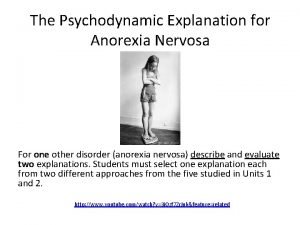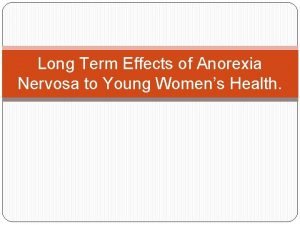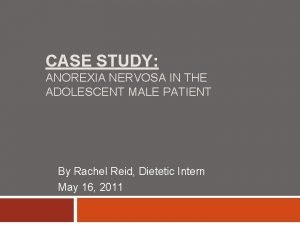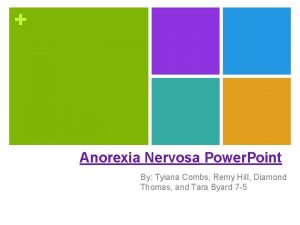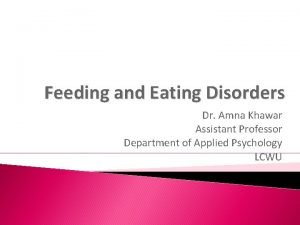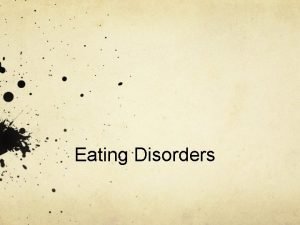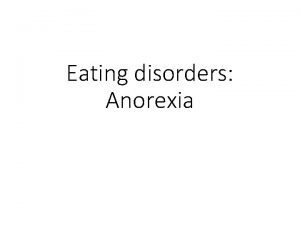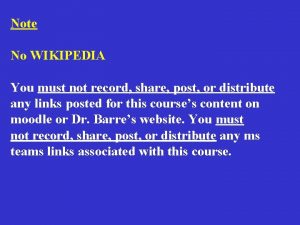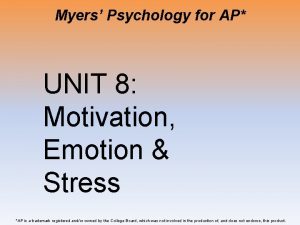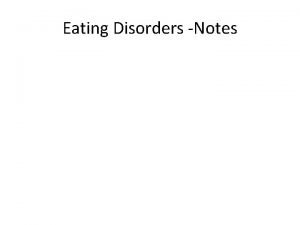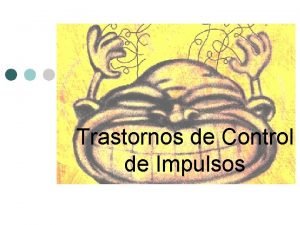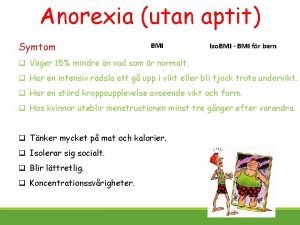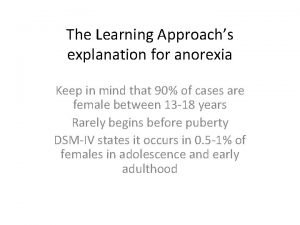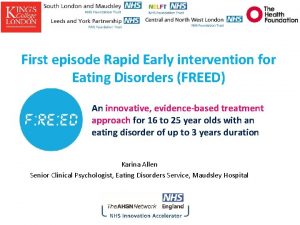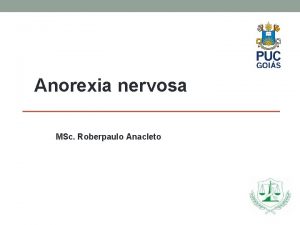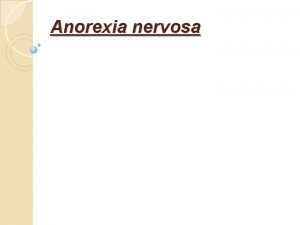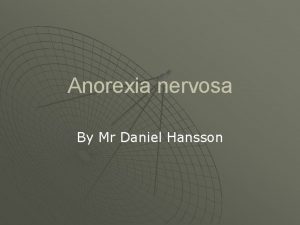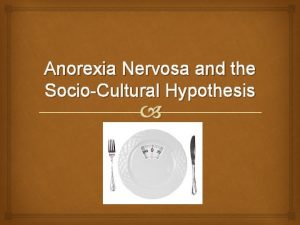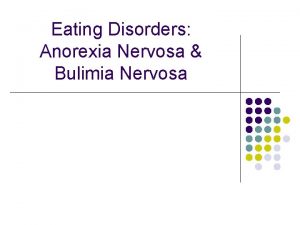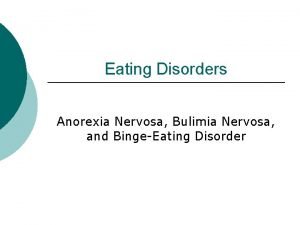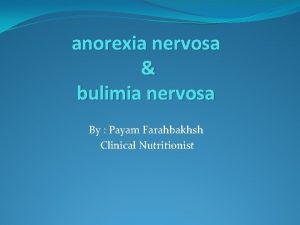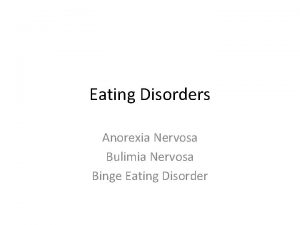The Psychodynamic Explanation for Anorexia Nervosa Map to
















- Slides: 16

The Psychodynamic Explanation for Anorexia Nervosa

Map to Spec – Page 59 3. Content f) For one other disorder (anorexia nervosa) describe and evaluate two explanations. Students must select one explanation each from two different approaches from the five studied in Units 1 and 2.

Starter • Match the descriptions to the stages of psychosexual development • Put the stages in order


Psychodynamic Explanation • Looking at the stages you’ve just completed, how/why do you think anorexia may develop?

Psychological explanations of anorexia Psychodynamic • There are three separate explanations from this approach that we will go through – not in textbook so take detailed notes! Make sure you ask questions if you don’t understand!

1. Unconscious desire to hold off puberty • By being anorexic, a young girl is not moving into adulthood • Remaining a child – not having adult responsibilities/worries • Anorexia stops development of breasts and hips, and menstruation – childlike body remains

2. Unconscious fear of growing up sexually • Similar to first explanation except instead of fearing adulthood, fearing sexual maturity • Keep childlike/boyish figure – not sexually desired by others • No menstruation • Can remain childlike without sexual worries

3. Ineffective Parenting • Bruch (1973) • In early childhood, mother fails at responding to child’s needs – i. e. feeds them when their crying due to fear, doesn’t feed them when their hungry • Child therefore feels ineffectual as they are not understood – grow up confused about their internal needs • Child does not develop self reliance – dependent on parents

• In adolescence, child attempts to break free • Develops anorexia as a means of exerting control and demonstrating independence • Can at least control own body • Mother’s continuing relationship problems mean a desire on the mother’s part to retain dependence and encourage immaturity in her daughter.

Evaluation • In your groups/pairs, attempt to come up with at least two strengths and two weaknesses of the psychodynamic explanation for anorexia

Murphy et al (2000) • A study to use when evaluating the psychodynamic explanation • Looked at siblings – one of which who has anorexia, other who doesn’t • Found affected sibling to have fewer friends, lack of boyfriend, and perceived to have more maternal control • Points to delay in psychosexual development and controlling eating as a means of showing independence

Strengths • Menstruation is inhibited by anorexia and therefore an explanation for this symptom suits the features of the illness. • The approach focuses on the whole situation and gathers in-depth data from individuals such as those with anorexia — so there is validity in the data that another approach using experiments might not give.

Weaknesses • As with the psychodynamic approach itself, a problem is that concepts such as sexual desires and a desire not to become an adult are unconscious processes and are not measurable. So there can be little scientific evidence offered for the explanations. • It cannot account for anorexia in males or for anorexia that starts in adulthood.

Extension • Attempt to evaluate the psychodynamic explanation in terms of your issues and debates section: Ø Gender bias Ø Culture bias Ø Nature/Nurture Ø Free will/Determinism Ø Parsimonious/Holistic

Exam Questions • Describe one explanation for anorexia nervosa. (4 marks) • Evaluate this explanation. (6 marks)
 Anorexia psychodynamic explanation
Anorexia psychodynamic explanation Anorexia nervosa long term effects
Anorexia nervosa long term effects Unit 3 lesson 6 anorexia nervosa and bulimia
Unit 3 lesson 6 anorexia nervosa and bulimia Case study on anorexia nervosa
Case study on anorexia nervosa Bulimia nervosa ppt
Bulimia nervosa ppt Anorexia nervosa
Anorexia nervosa Anorexia nervosa syptoms
Anorexia nervosa syptoms The diagnostic term anorexia nervosa literally means
The diagnostic term anorexia nervosa literally means Anorexia nervosa definition wikipedia
Anorexia nervosa definition wikipedia Ap psychology unit 8 motivation emotion and stress
Ap psychology unit 8 motivation emotion and stress Anorexia nervosa is characterized
Anorexia nervosa is characterized Psychodynamic causes of schizophrenia
Psychodynamic causes of schizophrenia Winona ryder anorexia
Winona ryder anorexia Bmi 12 anorexia
Bmi 12 anorexia Social learning theory anorexia
Social learning theory anorexia Anorexia vs bulimia usmle
Anorexia vs bulimia usmle Dominique anorexia
Dominique anorexia
